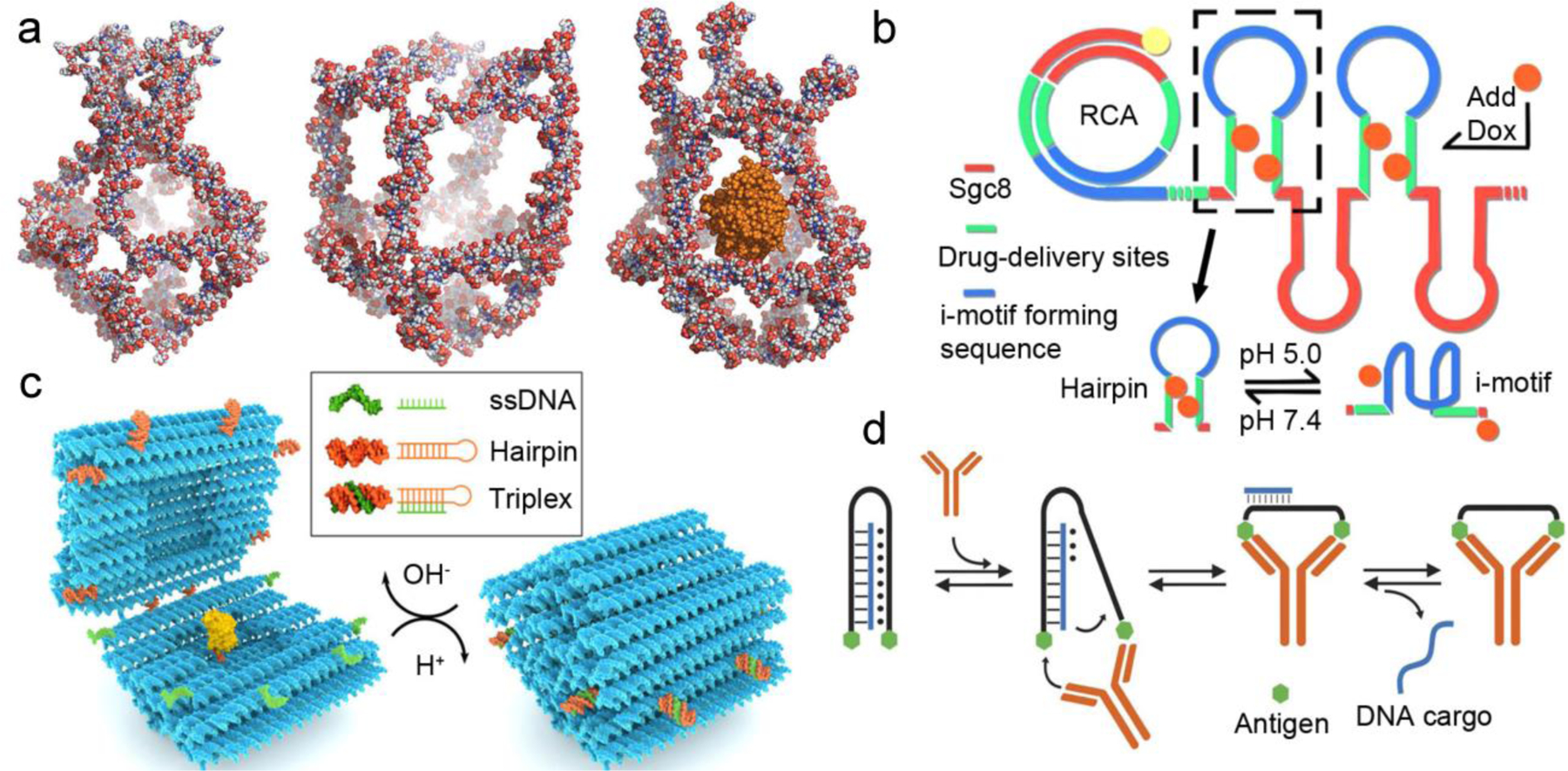Figure 6.

Examples of DNA-mediated drug release. (a) Atomistic models of a DNA nanocage: closed at 4 °C (left), extended at 37 °C (middle), and re-closed cage at 4 °C with HRP (orange) encapsulated. Reproduced with permission from ref. 109. Copyright 2013 American Chemical Society. (b) pH-responsive DNA nanoparticles with i-motif triggers. Intercalated drug is released upon acidification due to formation of i-motifs at low pH. Reproduced with permission from ref. 118. Copyright 2018 American Chemical Society. (c) Action of a pH-responsive, suitcase-like DNA origami. The DNA latch, which is comprised of a hairpin (orange) and a ssDNA (green), forms a triplex DNA staple at low pH, closing the carrier. At higher pH, the triplex latches are unlocked, opening the suitcase and displaying its protein cargo (yellow). Reproduced with permission from ref. 120. Copyright 2019 American Chemical Society. (d) An antibody-responsive DNA-triplex clamp. A clamp strand (black) labeled with two antigens (green hexagons) forms a triplex with a cargo ssDNA (blue). The recognition of an antibody of the two antigens causes a conformational change that ultimately leads to the release of the ssDNA cargo. Reproduced with permission from ref. 124. Copyright 2017 Springer Nature.
